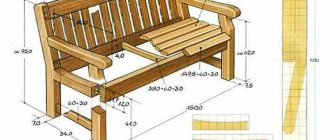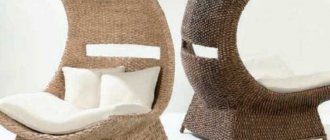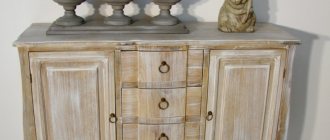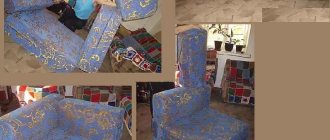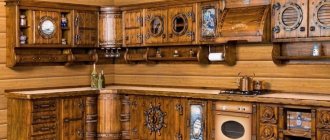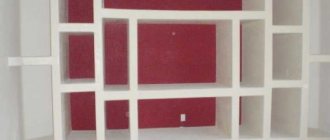Wicker furniture has always been in demand and testified to the wealth and refined taste of the owners. Its cost is quite high, since the products are made by hand and are original in their design. Natural rattan is considered the most popular material for its manufacture, but it is quite expensive and not everyone can afford it. To make rattan furniture more affordable, an artificial analogue was invented, which turned out to be much cheaper and stronger than natural rattan.
Wicker furniture has always been in demand and testified to the wealth and refined taste of the owners.
Amazing structures are also made from artificial rattan: houses for cats and indoor dogs, flower stands and other products.
After its invention, specialists began to quickly master it, and in a short time, artificial rattan products appeared on the furniture market, characterized by elegance, comfort and durability.
To make rattan furniture more affordable, an artificial analogue was invented, which turned out to be much cheaper and stronger than natural rattan.
Home craftsmen immediately appreciated the advantages of the new material, and those who did not yet have weaving skills looked with envy at the amazingly noble and beautiful products. But there is nothing in our life that cannot be mastered. Therefore, more and more often there are beginning home craftsmen who want to learn how to weave furniture on their own. Practice shows that the science of weaving is within the capabilities of everyone, especially since such a durable and comfortable material as artificial rattan, which is most often used in weaving furniture, can be purchased relatively inexpensively today.
Home craftsmen immediately appreciated the advantages of the new material, and those who did not yet have weaving skills.
To make artificial rattan furniture with your own hands, you will need the material itself for the work.
The benefits of making furniture with your own hands
Making wicker furniture from artificial rattan at home has its advantages:
- significantly saves the family budget;
- has a long service life;
- low weight of products;
- with external lightness and delicacy, it retains strength and reliability with careful handling;
- not subject to temperature changes and exposure to sunlight;
- does not contain harmful or toxic components;
- hypoallergenic;
- easy care.
But there is nothing in our life that cannot be mastered.
Important! The material itself is lightweight, easy to transport, attractive from an aesthetic point of view, has high strength, and is not subject to deformation from moisture.
Therefore, more and more often, novice home craftsmen want to learn how to weave furniture on their own.
It must be taken into account that the material has different lengths and differs in material thickness and width.
It is convenient to work with artificial rattan, as it is flexible and comes in the form of long threads, which does not require constant gluing or other methods of connecting small parts of the material.
Making wicker furniture from artificial rattan at home has its advantages.
The ancient art of wicker weaving
From the history of wicker weaving
Who among us as a child did not devastate dandelion meadows and weave wreaths from these wonderful fluffy lumps mixed with wildflowers and dry grass? Which child has not made paper rugs and rope dolls at one time or another? Many people probably loved this activity. But who thought that weaving is an art comparable in age to the age of the human race? In ancient times, people did not think about whether to weave or not. It was a necessity. Making dishes, vessels for storing food, various decorations - without these crafts, humanity would not have been able to develop.
A craft that has passed through centuries
Wicker weaving has passed through millennia and has come to us in almost its original form. How can it be modernized? The question is rhetorical. Both thousands of years ago and now, people weave according to the same principles, using the same techniques. And there is something mysterious and mystical about this. The weaving seems to exist outside of time and is unlikely to change over the next thousand years.
Another thing is that the very purpose of wicker weaving has changed. In the ancient world, it was a necessary need associated with the arrangement of human life. Nowadays, wickerwork serves mainly as decoration. But this does not mean that they have lost their practical meaning. Wicker weaving can be useful in modern life. To this day, folk craftsmen make furniture that is amazing in its beauty and lightness, capable of competing with modern factory-made furniture made from chipboard or wood veneer.
But let's return to the ancient world... Wicker weaving arose much earlier than pottery and occupied a significant place in the life of ancient man. Dwellings and outbuildings were built from the branches of woody plants, fences, children's cradles, sleigh and cart bodies, furniture, children's toys and dishes were made. And the most common products made from wicker were baskets. Weaving developed primarily in areas of rivers and lakes, where, on the one hand, there was a lot of natural material, and on the other, the need for wicker products was great and varied.
Since ancient times, weaving has been practiced in Africa and Asia, in Europe and Australia, in South and North America. They wove from reeds and ropes, willow and rattan, bamboo and reeds. Probably, along with baskets, fishing gear and traps for animals and birds were the first and most important “wicker crafts” for humans. Tackle made from thin willow rod was stronger than reed or grass, although it was not particularly flexible. Therefore, later the vine was replaced by various threads and scraps of leather.
How many centuries does wicker weaving go back? The oldest wicker objects found are considered to be Egyptian and Middle Eastern finds. For example, two perfectly preserved wicker chairs were discovered in the tomb of Tutankhamun. About the same ones can be seen today in furniture stores. Furniture and household utensils made from vines and tree roots were used in Ancient Rome - both in the houses of commoners and in the houses of patricians (they, by the way, were famous connoisseurs of grace and comfort). The rebel gladiators of Spartacus's army made light and durable battle shields from the vine.
It has been proven since ancient times that the vine is an excellent conductor of earthly energy. In Ancient China, the site chosen for building a house was first surveyed with the help of a dowser and the house was placed in a place where the vine did not deviate in the hands of the dowser. It is deeply symbolic that once upon a time the vine chose a place for a house, but now the house chooses a vine, which gives its inhabitants peace of mind and peace.
In the century before last, wicker weaving was used especially widely in France. The best products, made by skilled craftsmen, were covered with gold and decorated the boudoirs and palaces of noble people. At the end of the 19th century, books appeared with a detailed description of the technological process of weaving, gilding and silvering of wooden and wicker products. At this time, weaving became fashionable. Wicker furniture, baby strollers, travel chests, and suitcases were very popular. Weaving has moved from handicraft production to an industrial basis. To train masters, schools were organized in many countries around the world. In Rus', basket weaving was quite common. Almost every peasant could weave it if necessary. Virtuoso basket makers wove them for every taste: small and large, round and rectangular, oval and conical, with simple and complex weaving, with and without lids. And indeed, it was difficult to manage without baskets on the farm. They carried laundry to the river in them, took them on the road when going on a long journey, harvested crops in them, and went mushroom picking with them. Willow vine, flexible and durable at the same time, was often used in construction. It was considered an excellent material for the construction of walls and roofs. It is also important that it takes no more than a week to build, for example, a shed made of clay wattle walls. Another advantage is low cost. However, there is also a minus - the fragility of the building. Such a wicker house is designed for an average of 10–15 years of use, although, in principle, it can last for decades (this depends on the skill of the builders). Clay utility rooms were popular in the south of Russia and Ukraine a few decades ago.
Willow also has another – spiritual – meaning for the Russian people. Since ancient times, the image of a branchy willow has been a spiritualized image of a piece of living nature. And a willow twig (one of the varieties of willow) is a symbol of faith, a symbol of memory of the departed. It was plucked according to Christian rites in the spring during flowering on Palm Sunday and placed in the house in the red corner - an honor given to not many plants. Willow guards with its solemn thoughtfulness the sacred memory of fallen soldiers at memorials large and small. It decorates gardens and parks, cities and towns with its greenery.
This tree is widespread and valued not only in Russia. For example, the capital of the Democratic People's Republic of Korea, Pyongyang, is called the city of willows. Along the banks of the Taedong River, on which the city stands, huge weeping willows grow. They cover the embankments like a tent - a favorite place for rest and reflection of city residents. One can cite many examples of the people's generous love for the willow, its flexible, exciting branches, the rustle of its foliage, its touching defenselessness and unquenchable spiritual power.
As you can see, the willow twig has reached us in almost its original form. Of course, products made from it have become as complicated as possible, as has the weaving technique, but the essence of wicker weaving has remained unchanged.
Household wicker weaving is one thing, and another is the fashion for wickerwork, which is followed by almost all segments of the population. Wicker weaving is one of the most democratic crafts. In Russia, the first boom in fashion for wicker furniture began at the end of the 18th century. It was introduced by Prince Golitsyn, inspired by the impressions of his trip to Europe. He created a workshop on his estate in which he wove furniture and baskets from peeled willow twigs. Over the next decades, the art of wicker weaving was improved by Russian craftsmen. At the end of the 19th century, many craft schools appeared in Russia, which actively exchanged experience with foreign colleagues. Following the French, Russian craftsmen bleach, dye and even gild and silver the vine. There is a fashion for baskets painted with oil paints. Wicker weaving is becoming a genuine folk art in Russia.
At the beginning of the 20th century in Russia, the range of wickerwork simply amazed the imagination. All kinds of furniture, chairs, tables, armchairs, sofas, screens, bookcases, cribs, newspaper racks, strollers, travel accessories, chests, suitcases, suitcases, bags, sleighs, baskets, children's swings and toys were woven from wicker. There was probably no such item or utensil that craftsmen at that time could not weave from wicker.
In Russia, wicker weaving was practiced almost everywhere where willow grew or where plant material could be obtained that could replace it. The largest weaving centers were concentrated in the Moscow, Vladimir, Tver, Yaroslavl, Nizhny Novgorod, Kazan, and Vyatka provinces. The development of this craft was facilitated by the organization of schools where weaving was taught.
One of the largest centers of weaving was the village of Bolshie Vyazemy, Zvenigorod district, Moscow province, where the development of the craft was promoted by the local landowner, Prince D.V. Golitsyn, who introduced weaving from peeled twigs on his estate, and then in this village. Subsequently, furniture weaving was mastered here. In 1891, at the expense of the famous Russian philanthropist S. G. Morozov, A. I. Berezovsky was sent abroad to study wicker weaving in its most advanced forms. Upon his return, he organized a zemstvo training workshop at the Golitsyno station of the Moscow Railway. The workshop taught local artisans how to make fashionable items using domestic samples and manuals supplied by the Moscow Handicraft Museum, as well as albums and books published in London, Vienna, Paris, Cologne, New York and other cities around the world. The best workers of this workshop participated in international exhibitions, won international recognition and repeatedly received prizes.
Wicker weaving has also become widespread on Belgorod land in Starooskolsky, Korchansky, Belgorodsky, Grayvoronsky, Novooskolsky districts. Each of them once had its own clearly expressed artistic and technological features for the manufacture of household products from wicker. It is known that the settlement of Borisovka, Grayvoronsky district, was the center of handicrafts. But here, too, wicker weaving as a craft began to develop late and did not have such deep traditions that were preserved in the central regions of Russia. The reasons for this were strong remnants of serfdom. The impoverishment of peasants narrowed the domestic market.
Before and after the Great Patriotic War, widespread production of wickerwork was suspended because industrial priorities were set completely differently than before the revolution. However, in the 50s of the twentieth century there was some revival of the wicker craft. A wicker weaving workshop was created at the Borisov furniture factory. They began to produce wicker furniture and products for utilitarian purposes. In 1971, on the initiative of the artist Yu. P. Agafonov, the vine began to be used with ceramics. At the same time, the range of products produced by the wicker weaving workshop expanded: decorative crackers, candy bowls, panels and many other artistic products appeared.
Deciding on design and construction
The material provides ample opportunities for the implementation of design ideas. It can be used to make products of varying complexity, including relaxation sets consisting of wicker chairs, a sofa, and a table of an original shape. Interesting bookcases, bedside tables, chests, ottomans. Amazing structures are also made from artificial rattan: houses for cats and indoor dogs, flower stands and other products.
Significantly saves the family budget.
It is available with a smooth and ribbed surface and is available in a variety of colors and textures.
Attention! With all the breadth of choice, a novice craftsman should start with the simplest products that allow him to master weaving skills. The easiest way to start is by making an ottoman: an elementary design, the opportunity to master weaving skills, and in case of failure, it is easy to remake the defect, which turns out to be preferable in the first stages of mastering the skills of weaving from artificial rattan.
With external lightness and delicacy, it retains strength and reliability with careful handling.
. In addition, you cannot overdo it so as not to overtighten one of the sides, otherwise the result will not be satisfactory.
Necessary materials
To make artificial rattan furniture with your own hands, you will need the material itself for the work. In this case, you can select the desired configuration, taking into account the fact that it is available in the form
- long stripes
- braids
- rod
- imitation tree bark.
Not subject to temperature changes and exposure to sunlight.
At the initial stage of work, when a simple product is selected for manufacturing, a minimum of equipment will be required for weaving.
It must be taken into account that the material has different lengths and differs in material thickness and width. It is available with a smooth and ribbed surface and is available in a variety of colors and textures.
The material itself is lightweight, easy to transport, and attractive from an aesthetic point of view.
But if you want to make it even more elegant, you can use bright soft blankets and pillows as decoration.
What, from what and how to weave?
First of all, you should know that wicker furniture is divided into soft and semi-hard. There are several types of products:
- stick products - the sticks you use will serve as a supporting structure;
- frameless products - sticks are needed to act as stiffening ribs for the structure, you will need a lot of them, and they must be very strong;
- frame (compositing) and joinery-frame products, here a ready-made frame in the form of steel rods or duralumin tubes will be used, and weaving will be carried out between them.
Weaving methods.
Weaving methods are also different. You can use simple single weaving, openwork or even combined (for several twigs). In the process, you can stick to one continuous weave for the entire product, or you can try to create some patterns and combine them later.
It's worth paying attention to how you connect all the parts of your product. After all, you want the furniture to last a long time and be of high quality.
To do this, all nodes and elements must be securely and firmly connected. Be sure to ensure that there is the necessary rigidity. Choose the way you will connect the parts. It can be detachable. Then you will be able to assemble and disassemble furniture without any obstacles in the future. But there are restrictions on using this type of connection, because the nature of this furniture is quite specific. The second method is one-piece. You will need nails, a hammer, glue and self-tapping screws. With it, your furniture will really last a long time and reliably, but keep in mind the lack of mobility (in case of moving or transportation).
You can weave furniture from a wide variety of materials. For these purposes, they use willow, alder, bamboo, bird cherry, hazel and even nettle and raspberries. Apart from the fact that, in parallel with them, rattan material is also widely used for making furniture. It can be either natural or artificial. What to choose?
Required Tools
At the initial stage of work, when a simple product is selected for manufacturing, a minimum of equipment will be required for weaving. To get started, you will need:
- stapler - for attaching rattan to the base if a wooden base is used;
- small pliers;
- small hammer;
- a convenient sharp knife or cutter;
- soldering iron for soldering connecting elements of the material or glue.
It is convenient to work with artificial rattan, as it is flexible and comes in the form of long threads.
In order for the manufacturing process to proceed without unexpected interruptions, it is necessary to take into account the recommendations of experienced craftsmen.
Manufacturing process: step-by-step instructions
In order for the manufacturing process to proceed without unexpected interruptions, it is necessary to take into account the recommendations of experienced craftsmen who suggest organizing it in a certain order:
- Prepare the structure chosen as the base, wooden or metal. It can be made with your own hands, but you can also use a ready-made one.
- To make it convenient to work, install the guides on the base and secure them with self-tapping screws, a stapler or bolts.
- Level the surface of the frame by cutting off the protruding rods with scissors.
- The next step is weaving on the frame. Its type is chosen according to your taste and depending on the selected raw materials.
| Weaving type | Peculiarities |
| Simple | It is easy to perform. Perfect for those just learning to work with rattan. |
| Rope | Produces a dense weave with a pattern similar to a twisted rope. You can start working with this type after mastering the simple one. |
| Three rods | A more complex type of work that requires skill and ensures the strength and stability of the product. |
| In four rods | This is done in two ways. At first, the drawing looks the same from the outside and inside. The second is a rope; with its help weak strips of other types of weaving are secured or separated. |
| Openwork (simple and complex) | A variety of loose weaves with open cells. The complex openwork is similar to lace patterns. Simple openwork includes rhombuses, columns, rosettes, spirals, rings, and also chessboard. |
- Excess material is removed after completion of the work, and the ends are “masked” on the finished product.
The material provides ample opportunities for the implementation of design ideas.
In order for the product to be smooth, durable and neat, when weaving, it is necessary to constantly check how the rows of rattan “lay down”.
Attention! In order for the product to be smooth, durable and neat, when weaving, it is necessary to constantly check how the rows of rattan “lay down”. In addition, you cannot overdo it so as not to overtighten one of the sides, otherwise the result will not be satisfactory: the product will turn out to be lopsided and it will be impossible to use it.
Interesting bookcases, bedside tables, chests, ottomans.
Wicker furniture made from artificial rattan looks rich, it is elegant and graceful.
Varieties
Rattan is a type of vine palm that has a long stem with a layered structure. An elastic bark covers a porous middle layer, and behind it lies a durable core. After treatment with hot steam, the stem becomes incredibly flexible. Thanks to this property of rattan, it is possible to produce furniture of different shapes and sizes.
Country interior items are very diverse:
- tables;
- chairs;
- Garden swing;
- sun loungers;
- hammocks;
- sofas;
- armchairs;
- rocking chairs;
- benches;
- couches.
You can make such furniture yourself.
Depending on the purpose of use, furniture elements can be divided into groups:
- items for interior decoration;
- outdoor furniture;
- universal furniture elements that are equally suitable for both outdoors and indoors.
By design features there are:
- stationary pieces of furniture - have a durable frame, so they are installed in a specific area;
- portable furniture;
- hanging structures: hammocks, armchairs, hanging beds.
The final stage is decoration
Wicker furniture made from artificial rattan looks rich, it is elegant and graceful. But if you want to make it even more elegant, you can use bright soft blankets and pillows as decoration.
With all the breadth of choice, a novice craftsman should start with the simplest products that allow him to master weaving skills.
The product will be lopsided and will be impossible to use.
Advantages and disadvantages
The benefits of rattan furniture are known to many. This is probably why she has so many fans. The advantages include:
- durability, some products last for more than ten years without problems;
- non-fading color;
- elasticity and flexibility;
- environmental friendliness;
- great shape and beauty.
Rattan products have many advantages.
The disadvantages of such furniture include:
- instability to changing weather conditions;
- high price;
- tendency to dry out.
Only natural materials have disadvantages.
But when using artificial rattan, these disadvantages disappear.
